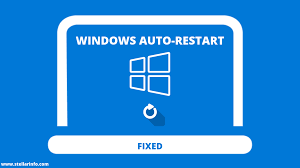Restart Auto: Everything You Need to Know About Restarting Your Car

Whether you’re dealing with a dead battery, a malfunctioning engine, or a stalled vehicle, understanding how to properly restart your car is essential. Restarting a car is a common situation that every driver encounters at some point. From basic jump-starting methods to troubleshooting more complex issues, knowing how to restart auto correctly can save time, money, and stress.
In this comprehensive guide, we will cover the most effective ways to restart your vehicle, common problems that prevent cars from starting, and tips to avoid issues in the future. Whether you’re a new driver or an experienced car owner, this guide will equip you with everything you need to know.
Common Reasons Your Car Won’t Start
Before learning how to restart a vehicle, it’s important to understand the common reasons why a car fails to start:
1. Dead or Weak Battery
A dead or weak battery is Restart Auto the most common cause of a car failing to start. Signs of a bad battery include:
- Clicking noise when turning the key
- Dim headlights or dashboard lights
- Slow cranking engine
2. Faulty Starter Motor
A bad starter motor prevents the engine from turning over. Symptoms include:
- Grinding noise when starting the car
- Free-spinning sound without engine cranking
- No response when turning the key
3. Fuel System Issues
If your car runs out of gas or has fuel pump issues, it won’t start. Indications include:
- The engine cranks but won’t start
- Sudden loss of power while driving
- No sound from the fuel pump when turning the key
4. Ignition System Problems
A damaged ignition switch, Restart Auto broken spark plugs, or bad ignition coils can prevent the engine from starting. Signs of ignition failure include:
- No response when turning the key
- Engine misfires before shutting down
- Flickering dashboard lights
5. Alternator Failure
The alternator charges the Restart Auto battery while the car is running. If it fails, the battery won’t have enough power to start the vehicle.
How to Restart Your Car
Depending on the issue, there are different ways to restart auto effectively. Here are some step-by-step solutions:
1. Jump-Starting a Car with a Dead Battery
A jump-start is the quickest way to revive a car with a dead battery.
Steps to Jump-Start a Car:
- Find a working vehicle: Park it close to your car without touching it.
- Turn off both engines: Ensure both cars are in park (automatic) or neutral (manual) with the parking brake engaged.
- Attach jumper cables:
- Red cable (+) to the dead battery’s positive terminal
- Other red end to the good battery’s positive terminal
- Black cable (-) to the good battery’s negatiRestart Auto ve terminal
- Other black end to an unpainted metal surface on the dead car (not the battery)
- Start the working car and let it run for a few minutes.
- Attempt to start the dead car.
- If successful, keep the engine running for at least 15 minutes to recharge the battery.
- Remove jumper cables in reverse order.
2. Push-Starting a Manual Transmission Car
If you drive a manual car, you can push-start it without jumper cables.
Steps to Push-Start a Car:
- Sit in the driver’s seat and turn the key to the “on” position.
- Press the clutch and shift into second gear.
- Have someone push the car or roll it down a slope.
- Once moving (5-10 mph), release the clutch quickly while pressing the accelerator.
- If the engine starts, drive forRestart Auto at least 15 minutes to charge the battery.
3. Checking the Fuel System
- Refuel if your car is out of gas.
- Listen for the fuel pump when turning the key.
- Inspect fuel lines and filters for blockages.
4. Testing the Starter Motor
- Try tapping the starter motor gently with a wrench to free up a stuck solenoid.
- Check the wiring conneRestart Auto ctions for looseness.
- Consider replacing the starter if it fails repeatedly.
5. Inspecting the Ignition System
- Turn the key and check dashboard lights.
- Replace worn-out spark plugs.
- Check ignition coils for damage.
Preventing Future Car Starting Issues
To avoid dealing with a non-starting vRestart Auto ehicle, follow these preventative tips:
1. Maintain the Battery
- Check battery terminals for corrosion.
- Test battery voltage regularly (healthy range: 12.4V–12.7V).
- Replace old batteries every 3-5 years.
2. Service the Starter Motor
- Listen for signs of a failing starter and replace it before failure.
3. Keep the Fuel System Clean
- Use high-quality fuel.
- Change the fuel filter regularly.
- Keep at least a quarter tank of fuel at all times.
4. Check the Ignition System
- Replace spark plugs and ignition coils as per manufacturer recommendations.
5. Monitor the Alternator
- If headlights dim while driving, have the alternator checked.
6. Store Jumper Cables in Your Car
- Always keep jumper cables or a portable jump-starter in your trunk.
Conclusion
Dealing with a car that won’t start can be frustrating, but knowing how to restart auto effectively can save you time and stress. By diagnosing the issue correctly and using the right method—whether jump-starting, push-starting, or troubleshooting fuel and ignition problems—you can get back on the road quickly.
To avoid future breakdowns, maintain your car’s battery, starter, fuel system, and ignition components regularly. Whether you’re a daily commuter or an occasional driver, being prepared for restart auto situations is essential.
Next time your car refuses to start, refer to this guide and take the necessary steps to restart it efficiently and safely!




